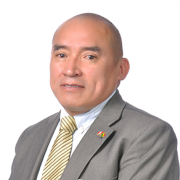The SF Tin Project
This polymetallic Sn-Zn-Ag (Tin-Zinc-Silver) project is located in the west-central region nof Bolivia, 60km southeast of the city of Oruro, in the Potosi department. The 2 sq-km property encompasses the historical open pit and underground workings from Spanish Colonial times, which exploited the deposit on a minor and limited scale.
The mineralisation is hosted within a window of Silurian age (423 – 419 Ma) clastic sediments comprising interbedded and layered units of greywacke / sandstone (Scc), as well as interbedded sandstone, siltstone, and shale units (Sll – Sun). The Silurian aged sedimentary rocks which host the mineralisation are unconformably overlain by volcano-sedimentary and pyroclastic ignimbrites (Tvm) of Cenozoic age (66 – 0 Ma), with dacitic to rhyodacitic compositions across much of the surrounding area.
Porvenir Project
The Porvenir polymetallic Sn-Zn-Ag (Tin-Zinc-Silver) project is located in the west central region of Bolivia, 65km southeast of the city of Oruro, in the Oruro department (Figure 1). The 11.25 sq-km property encompasses historical near surface open pit and underground workings, which exploited the deposit on a limited scale. The mineralised structures were primarily exploited for their high-grade Zinc (Zn) content.
A historical drill program was carried out by DOWA Mining, which included the completion of 88 diamond drill holes, for a total of approximately 25 000 m. Sporadic and inconsistent sampling of the drill cores indicated two distinct zones of polymetallic mineralisation, which include a central zone with elevated Sn as well as Zn mineralisation, as well as a Zn dominant, with minor Sn occurences in the NE portion of the property. It should be noted that selective sampling for high grade Zn mineralisation was carried out, and as such, sampling intervals are inconsistent due to entire drill cores not being sampled
Skukum Gold Project
The Mt. Skukum deposit is a structurally controlled epithermal gold deposit hosted in Eocene volcanics. Low temperature auriferous quartz-calcite-adularia veins occur along brittle fractures and faults with little shearing and appear to be formed at shallow levels.
The Skukum Creek deposit is a structurally controlled, polymetallic gold-silver, deep epithermal vein deposit hosted in Mid-Cretaceous Mt. McNeil granodiorite. In the Skukum Creek area, zones of mineralization are hosted primarily by a series of linked, northeast-trending faults that may represent splays off the Berney Creek fault system.
The Goddell deposit is a structurally controlled shear-hosted gold deposit. Mineralization is associated with altered felsic dykes within the shear zone. The shear zone is located within Mid-Cretaceous Carbon Hill granodiorites.
Tin Market Overview
Tin is commonly referred to as the "glue" of metals, as it is used to bind electrical components together. It is present everywhere in ways that are essential to our quality of life. Tin is a critical component of high-tech hardware, electrical vehicles, robotics, and renewable technology.
97% of the global tin supply comes from developing economies and 40% comes from artisanal and small-scale miners. The majority of the world’s tin comes from alluvial mining, a highly unsustainable practice.
The world is in desperate need of new sources of tin. There are only a few projects operating and even fewer sustainable ones. With tin demand being primarily driven by increased use of electronics, the rise of the internet of things, and the renewable technology revolution, the tin deficit has resulted in a depleted tin supply chain that now sits at critical levels. Tin supply on the London and Shanghai Exchanges are historically low with deficits expected for the foreseeable future.








